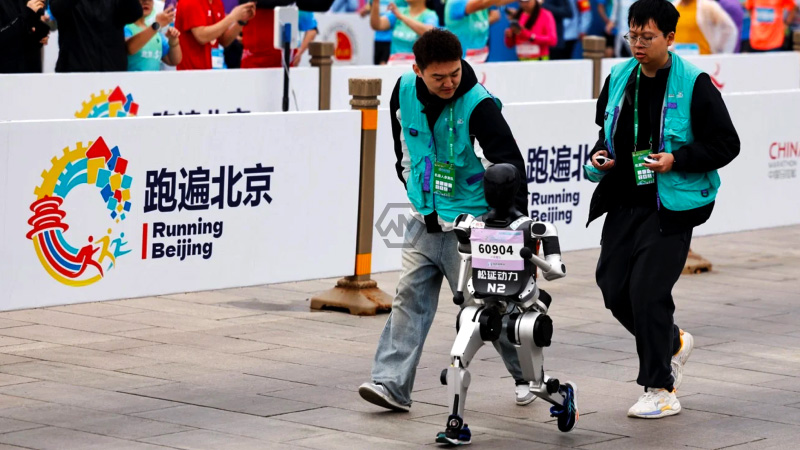- Humanoid robots raced alongside humans in Beijing’s 21-km half-marathon.
- Tiangong Ultra won the robot category, finishing in 2 hours and 40 minutes.
- Robots used support teams, battery swaps, and tech innovations to complete the race.
In a world-first event, humanoid robots participated in a half-marathon held in Beijing’s Economic-Technological Development Area. While humans followed traditional race protocols, the robots competed in designated lanes for safety, with staggered start times.
Unlike their human counterparts, robot participants were supported by technical crews throughout the race. Maintenance stations along the route enabled battery replacements and minor repairs.
Robots Break Ground in Marathon World with First Competitive Run in China
China’s ambition to lead in the robotics frontier took a major stride with its first half-marathon event involving humanoid robots. Nearly 20 robotic companies participated, including known names like Unitree, Leju Robotics, and NOETIX. The race served as a live demonstration of robotic mobility, stability, and algorithm-driven navigation in a real-world environment.
Each robot began the race at one-minute intervals, guided by gunshot signals, while human participants raced separately. The terrain included challenges such as slopes and rail crossings, which tested both physical durability and movement intelligence of the robotic participants.

Human runners hydrated at water stations, while robots required carefully timed maintenance stops. Teams were permitted to substitute malfunctioning robots, though each swap incurred a 10-minute penalty. These measures emphasized that while robotics has advanced significantly, hurdles in energy efficiency and heat management persist.
Recognition in the robot division extended beyond time-based rankings. Awards like Best Endurance, Most Innovative Form, and Best Gait Design were given to highlight the diverse engineering approaches taken by the participating teams. This race not only showcased technical progress but also hinted at a future where humanoid robotics could integrate into broader society.
This race marked a significant leap in human-robot coexistence, reflecting both the technological progress and the aspirations of an evolving future shaped by artificial intelligence and robotics.
“The future is already here — it’s just not very evenly distributed.” – William Gibson



